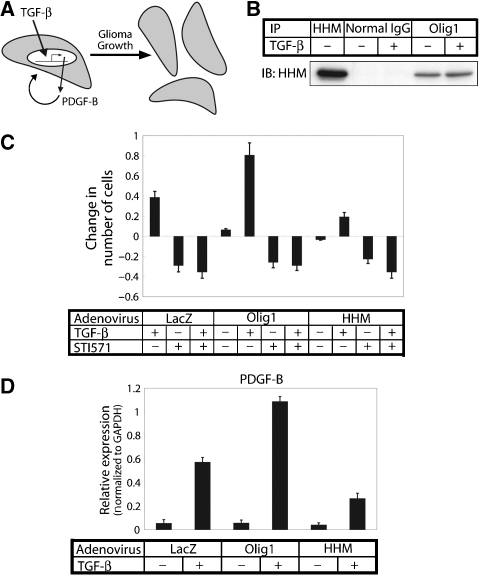Figure 5.
HHM antagonizes the TGF-β-induced proliferation of glioma cells accelerated by Olig1. (A) Model of promotion of the growth of glioma by TGF-β through induction of PDGF-B exerting an effect through an autocrine mechanism (Bruna et al, 2007). (B) Physical interaction of endogenous Olig1 and HHM in U373MG cells. U373MG cells were treated with or without TGF-β (1 ng/ml) for 3 h before harvest. Cell lysates were subjected to immunoprecipitation with anti-Olig1 antibody, anti-HHM antibody as a positive control, or normal mouse IgG as a negative control, followed by immunoblotting with anti-HHM. (C) Olig1 promotes TGF-β-induced proliferation of glioma cells, whereas HHM suppresses it. U373MG cells were infected with Ad-LacZ, Ad-Olig1, or Ad-HHM and seeded. After 24 h, the cells were treated with TGF-β (1 ng/ml) and/or STI571 (5 μM), and cell number was counted 72 h after treatment. Results were expressed as the change from control (untreated cells). Error bars represent s.e. (D) TGF-β-induced expression of PDGF-B in Ad-Olig1- or Ad-HHM-infected cells. Expression of PDGF-B was examined by quantitative real-time PCR analyses after infected U373MG cells were treated with TGF-β (1 ng/ml) for 3 h. Values were normalized to the amount of GAPDH mRNA. Error bars represent s.d.

